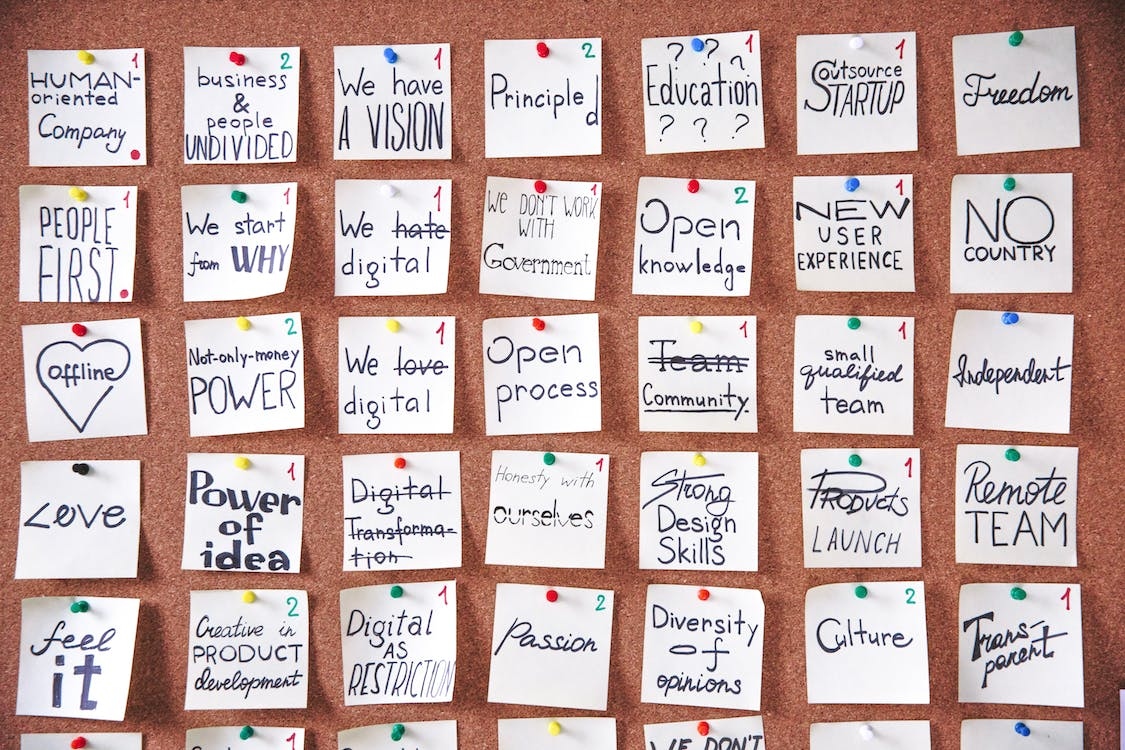How to Make Offboarding a Positive Experience for Employees
.png)
In this article
How to Make Offboarding a Positive and Memorable Experience for Employees
Everyone knows that onboarding is vital for a healthy relationship with new starters. But what about offboarding? Research finds that 71% of organizations have no formal offboarding process in place.
Let's start with what offboarding is and why it’s just as important as the onboarding process for creating lasting relationships at work.

What does offboarding mean?
Offboarding is a structured process for ending an employee’s time with your company. This process should apply whether the employee is moving to a new job, is retiring, resigning, or being laid off.
Offboarding covers all the admin involved in having someone leave the company, and it ensures that any security measures like data transfers are taken care of.
Now that the employee has nothing to lose by being honest, offboarding gives you an opportunity to hear about their experience of the role and working in the company as a whole. This can help you identify changes to make in the company, as well as adjust the job scope before re-hiring for that role.
So, before dipping your toes into the candidate pool again, refocus your energy on building a proactive offboarding experience instead.
Why is employee offboarding important?
A proactive offboarding process serves several important functions in the company. It gives former employees a chance to speak freely about issues they might not have raised before. This highlights ways to improve the company in several ways: come up with new processes and norms for teams to work together, and redefine the scope of the role if you need to hire a replacement.
A standardized offboarding also helps you…
- Stay compliant with relevant labor laws and avoid potential lawsuits.
- Minimize disruption by handing information over from the employee to their replacement.
- Reduce security risks around information going missing.
- Protect the relationship with the employee who’s leaving, contributing to your company’s brand.
Effectively offboarding employees is just one part of Human Captial Management (HCM). With HCM tools you can standardize HR processes and make sure you get it right every time.

How can I improve my offboarding process?
So how can you improve your offboarding process? It stars with clear and honest communication, but everything else follows from a thorough, standardized process using tools like Human Resources Information System (HRIS) technology. Let’s look at all of those factors in detail.
Communicate clearly
The playwright George Bernard Shaw once said, “the single biggest problem in communication is the illusion that it has taken place.”
Sadly, this is often the case at the end of the employee lifecycle - especially for those who leave to move on to bigger and better things.
Not only does it put internal security at risk, lack of communication can create uncertainty amongst the wider team and stifle productivity. Eliminate damaging unrest by communicating the exiting employee's departure — the earlier, the better — along with clear solutions as to how you'll be going forward.
To address communication gaps at the end of the employee lifecycle, consider integrating the definition of psychometrics into your exit process. Psychometrics, defined as the scientific study and measurement of psychological attributes, can help you gather valuable insights into the reasons behind employee departures. By conducting exit interviews or surveys using psychometric principles, you can uncover underlying issues and trends, allowing you to implement targeted solutions to improve retention and mitigate future turnover.
In such a fast-paced environment, the need for effective human resource management has never been felt more. An HR Information System (or “HRIS system”) can reduce manual administrative burden and automate workflows, allowing for more time for effective communication.
Complete the necessary paperwork
Avoid any legal issues and safeguard against any security breaches by keeping your legal documents up to date. It may seem tedious, but offboarding compliance paperwork is an essential part of the offboarding process to firmly protect your organization's confidentiality and keep trade secrets secret.
Fluctuating amongst different industries and sectors, here are some prime examples of compliance paperwork you should think about including.
- A formal letter of termination in writing (paper or email).
- A termination acceptance letter.
- Final payslip and any statutory sick pay or bonus payments.
- Non-Disclosure Agreement (NDA) / Non-Compete Agreement.
- Letter of recommendation/employee reference.

Effective knowledge transfer process
Knowledge transfer holds the key to preserving essential knowledge from long-term employees leaving the company that can be shared with their successors and the team. Collecting as much information about their responsibilities as possible, the knowledge transfer process should begin as soon as an employee gives notice.
To create an effective knowledge transfer process for offboarding employees, ensure your knowledge transfer process requests the following information.
- Any workflow tools and resources needed to complete the employee's duties.
- Crucial contacts and relationships.
- Location(s) of physical records.
- Any unfinished/ongoing tasks.
- Any scheduled meetings.
Kick your HR strategy up a notch and enhance employee management and performance even further, by combining your new offboarding knowledge transfer method with an effective human resource management system.
Conduct an exit interview that counts
Your employees are your greatest asset for driving success - even when they're leaving.
Providing valuable and honest insight into the inner workings of your company, the exit interview is an integral part of the offboarding process. Get this right, and you'll reap the rewards of long-lasting brand advocates. Get this part wrong, and you could lose a valuable employee and seriously damage your brand.
Here are some tactics to create a worthwhile exit interview.
Explain the offboarding process
For absolute clarity and to put their mind at ease, explain the process thoroughly, eg. last pay date, how and when to return the equipment, how to reapply, etc.
To reduce any unnecessary pressure, it's also important to make sure employees know they can decline to answer any questions if they wish. You could also give them the opportunity to answer the questions beforehand, to help them craft constructive responses.

Make employees feel safe and that all feedback is valued
Utilize active listening skills to build engagement with them. Take notes, be kind and patient, and show respect and empathy for their decision and feelings. Allowing them to get anything negative out in the open can help prevent them from spreading negative opinions about the company.
Ask tough questions
Employees are more likely to be comfortable being open and honest if they’re leaving, so it's imperative to ask why they’re leaving.
Include yes/no and rating scale questions
This will help build stronger data sets and allow for more detailed explanations.
Express your gratitude
To foster a positive ongoing relationship, let them leave on a positive note by thanking them for their hard work and loyalty and for being honest with their feedback. If they are leaving on good terms, make sure they know how to re-apply with the company.
Of course, offboarding happens for a variety of different reasons. So, here is a quick breakdown of common cases along with some offboarding processes.
Redundancy
- Help them find a new job.
- Competitive compensation package.
- References / recommendations.
Retirement
- Thorough knowledge transfer.
- Coordinated succession planning.
- Come up with retirement party ideas and celebrate their tenure at the company.
Layoff
- Concise and accelerated termination offboarding process.
- Deactivate all accounts and secure company assets ASAP.
Leaving for personal reasons
- Negotiate a counteroffer.
- Non-disclosure agreements.
- Non-compete legal contracts.
Thoroughly Mitigate Security Risks
Data security is another big factor to take into consideration with your offboarding strategy. By ignoring basic offboarding processes, such as removing access to sensitive company resources, you could be putting valuable data and assets at risk.
For example, in the onboarding stages you install remote desktop functionality on your employee’s device. At the offboarding stage, this login will need to be deactivated lest you give non-employees access to critical systems.

Free to use image sourced from Pexels
More offboarding security best practices to consider:
- Collect any company-issued devices, access cards, and keys.
- Remove access to all networks, including cloud-based services.
- Sign them out of all devices and online sessions.
- Update or redirect their email and phone accounts.
- Change passwords on any shared accounts.
- Update the company website e.g. Meet The Team page.
Similar to the way services like Vonage call queueing prevent companies from losing customers when all agents are busy, taking the time to understand an employee's decision to leave works wonders on lowering staff turnover further down the line. In turn, less employee turnover means less hiring and training costs, heightened quality and productivity, and enhanced reputation and brand image.
Employee offboarding checklist
To manage the employee offboarding experience with grace - not disgrace! - here is a 10-point offboarding checklist.
- Try to retain the employee e.g. make a counter-offer.
- Communicate the departure to all relevant departments.
- Prepare and issue paperwork.
- Initiate knowledge transfer.
- Hold an exit Interview and exit survey.
- Remove IT, network and file access.
- Reclaim company assets.
- Complete the final pay process.
- Celebrate their next chapter / publicly thank them for their hard work and loyalty.
- Encourage them to stay in touch.
Key takeaway
With record numbers of workers leaving their jobs around the globe, there's never been a better time to put a robust offboarding process in place. Look after outgoing employees as well as new employees to create a positive last impression for everyone involved, and never look back!
OTHER BLOGS YOU MIGHT LIKE:
15 Corporate Gifting Ideas to Thank Loyal Clients
The Power of a Warm Welcome: Why Onboarding Swag Sets the Tone for Employee Success



.png)
.jpeg)


